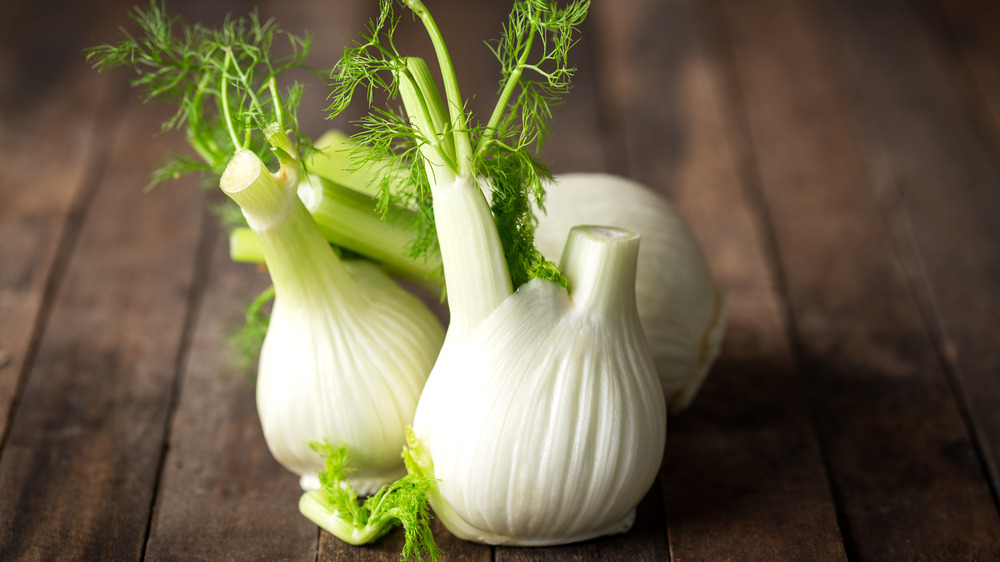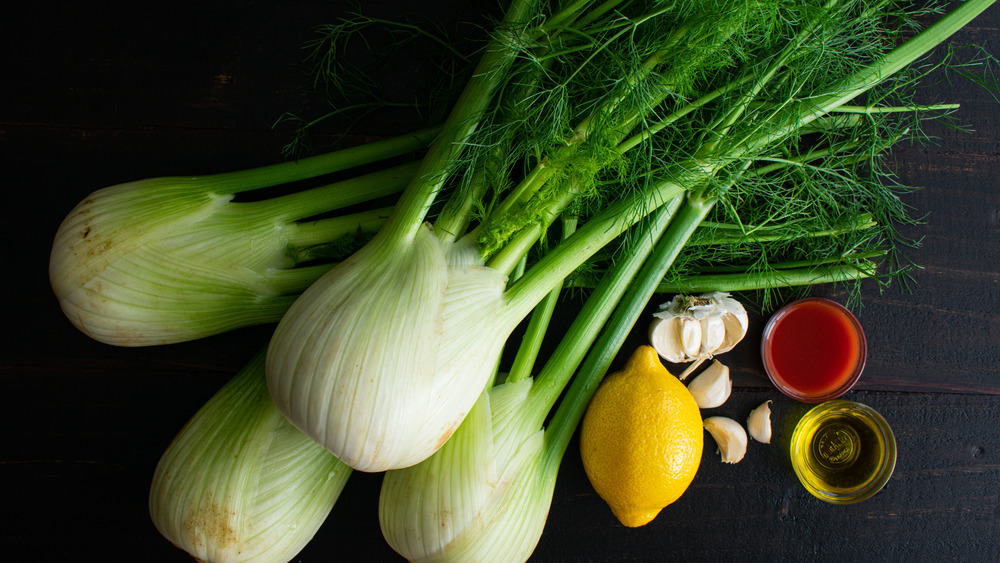What Is Fennel And What Does It Taste Like?
If the mention of fennel conjures a vague bulbous vegetable and a big question mark in your mind, you're not alone. It seems like this veggie is getting a spotlight in more and more recipes these days — you've probably seen it in a salad (like this one The Kitchn), or maybe roasted with pork chops and apples (such as in this recipe from Food & Wine). But fennel's unique shape, and even more unique flavor profile, may stump even the most exuberant of home cooks. So allow us to clear up the confusion.
Fennel is a vegetable that is also technically considered a perennial herb, according to The Spruce Eats. It's in the same family of plants as carrots, parsnips, parsley, coriander, and more (per Encyclopedia Britannica). Fennel consists of a bulbous base with fronds sprouting out of it that have wispy little leaves on them that look similar to dill. Its color and fibrous texture are most similar to stalks of celery. For the most part, only the fennel bulb is used when cooking. But it's worth noting that the entire plant is edible, and the fronds make a great addition if you're making pestos or sauces at home (via FoodPrint).
Fennel has a distinct, and polarizing, flavor profile
So what exactly does fennel taste like? When you take a bite of raw fennel, the closest recognizable flavor to come to mind is probably licorice. Fennel's flavor is also described as being similar to anise, a strong spice commonly used in Mediterranean and Asian dishes (via Britannica). This sharp, subtly sweet, and somewhat bitter taste is a big reason why fennel is such a polarizing plant (via NBC News). Much like licorice, people usually love it or they hate it.
However, when fennel is cooked, the flavor and texture changes dramatically and becomes much less controversial. The flesh becomes very soft and tender. The flavor becomes much milder, and the subtle sweetness overshadows most of the bitter notes, per Chicago Tribune.
We highly encourage enjoying fennel in its raw form. Fine Cooking notes that it's important to make sure the fennel is sliced very thin so that the texture is easier to chew. But don't shy away from cooking it. It's incredibly versatile and lends itself well to sautées, stir-frys, braised and roasted dishes, and even soups and stews. It can really come through in a dish, such as this classy cioppino (or seafood stew) recipe.

